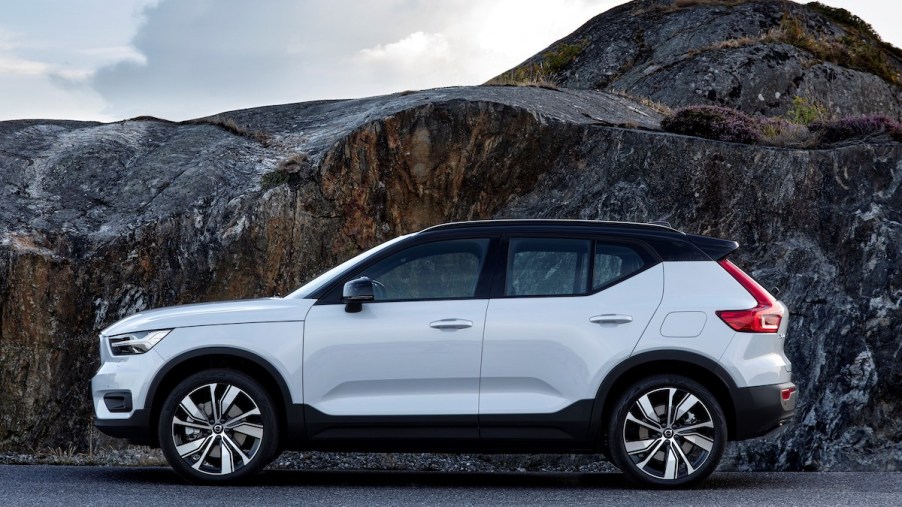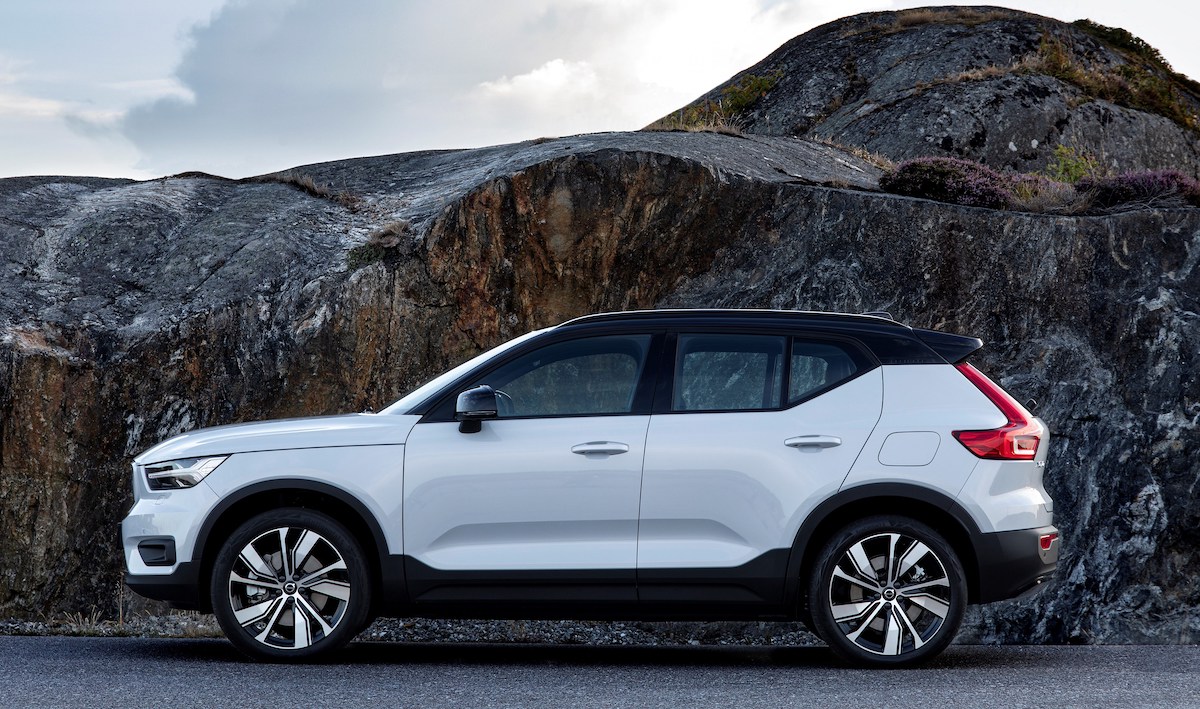
4 Advantages the 2022 Volvo XC40 Recharge Has Over the BMW i4
Every year, more EVs hit the market, tempting drivers to trade in their gas guzzlers for more climate-friendly models, and the choices are more plentiful than ever. One such option is the Volvo XC40 Recharge, but it’s been flying under the radar for the most part. Still, the Volvo XC40 Recharge can hold its own against luxury competitors such as the BMW i4. Here are four advantages this electric compact SUV has over the electric compact car.
1. AWD comes standard on the 2022 Volvo XC40 Recharge

All-wheel drive is one of those features that’s nice to have in inclement weather and rough terrain. All four tires are activated, giving you better control over the vehicle than you would get with a front- or rear-wheel drive vehicle.
Still, many automakers fail to offer AWD as a standard feature, forcing the buyer to spend more money to get it. This is the case with the base-model BMW i4 eDrive40, which costs $56,395. It comes with rear-wheel drive as standard.
If you’re willing to upgrade to the BMW i4 M50, which costs $66,895, you can get AWD standard. But that increases the cost by $10,500, which might be a dealbreaker for many car buyers.
In contrast, the 2022 Volvo XC40 Recharge offers AWD as standard. With a starting price of $58,150, it’s slightly more expensive than the BMW i4 eDrive40. Even so, paying $1,755 more is worth it to get AWD, especially in light of the XC40 Recharge’s other perks.
2. The Volvo XC40 Recharge has superior horsepower and torque
In general, more horsepower and torque means better acceleration. There are other factors that come into play, of course, such as the weight and size of the vehicle, engine type, and transmission. However, more horsepower and torque will give you a better idea of what a vehicle is capable of.
In this case, the Volvo XC40 Recharge wins. It harnesses 402 hp and 486 lb-ft of torque. By comparison, the BMW i4 eDrive40 makes 335 hp and 317 lb-ft of torque. Those are respectable numbers, but the i4 falls pretty far behind the XC40 Recharge in this category. Granted, the i4 is a smaller EV, but there’s less than a 100-pound curb weight difference between the two models — 4,741 pounds for the XC40 Recharge and 4,680 pounds for the i4 eDrive40.
3. The Volvo XC40 Recharge is roomier than the BMW i4
Whether you’re headed on a road trip or just need to go pick up groceries, it’s always nice to have more cargo space. In this case, Edmunds reports that the 2022 Volvo XC40 Recharge has 25 cubic feet of space behind the rear seats. If you fold them down, cargo capacity increases to 57.5 cubic feet.
In comparison, Car and Driver reports the 2022 BMW i4 has only 10 cubic feet of trunk space. That’s enough to shove a couple of suitcases, but that’s about it. You can always fold the rear seats down, but that means no backseat passengers.
4. The SUV has higher ground clearance
Ground clearance is something most people consider more when looking at SUVs and trucks, but it’s also important for cars too. After all, how many times have you gone over a speed bump, cringing as you question if your car can make it without scraping the undercarriage?
The Volvo XC40 Recharge has a ground clearance of 6.9 inches. That gives you plenty of room to zoom around town, although it might not be suitable for off-roading despite the AWD.
The BMW i4, by comparison, gives you a mere 4.9 inches. It might make getting in and out easier, but heavy snowfall and flooding could make driving a hassle or impossible.


